Leopard sharks are a small, spotted species of shark found inhabiting the coastal waters of the Eastern Pacific Ocean. As their name suggests, they have distinctive dark spots all over their bodies that help camouflage them in kelp forests and seaweed-covered rocky reefs. But where exactly within this vast ocean region do these unique sharks call home?
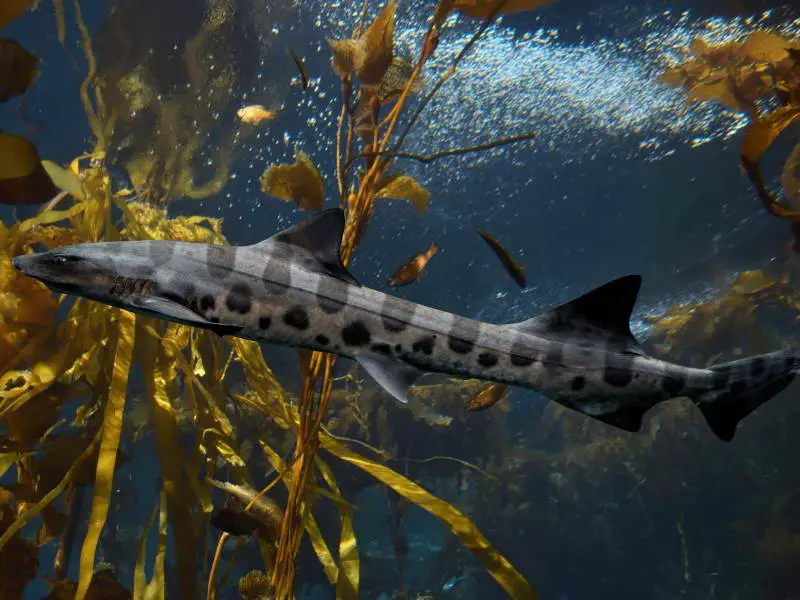
This article will explore the habitat and range of leopard sharks through an in-depth look at their known locations in waters off northern Mexico, the west coast of North America, and beyond.
Leopard Shark Locations Along the California and Oregon Coasts
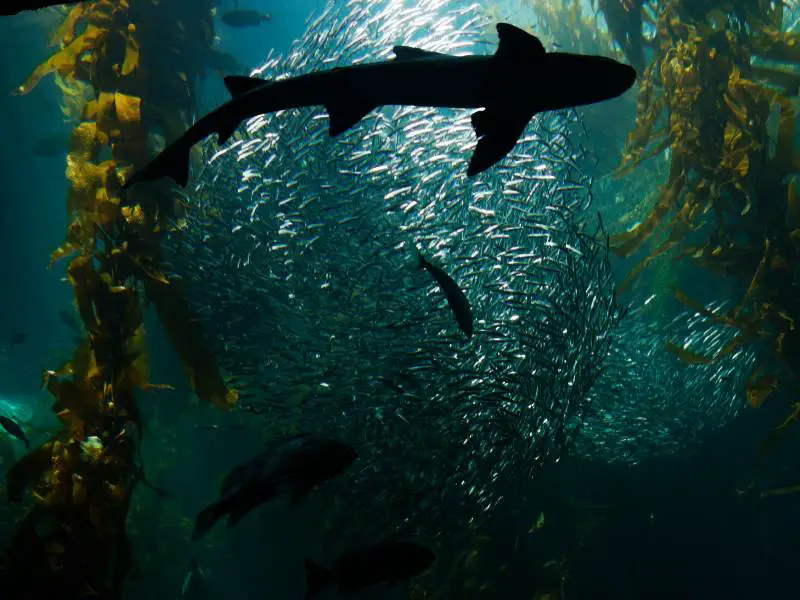
One of the primary locations where leopard sharks can be found is along the coastlines of California and Oregon in the United States. Moving north from southern California up through central and northern sections of the state, leopard sharks are a common sight in:
- La Jolla, California: The sheltered coves and kelp forests off La Jolla Cove in San Diego are prime leopard shark habitat. Divers regularly observe these sharks swimming amidst the swaying kelp fronds.
- Monterey Bay, California: Leopard sharks are abundant residents of the shallow waters surrounding Elkhorn Slough and Moss Landing in Monterey Bay. The protected mudflats and eelgrass beds here provide thriving leopard shark nurseries.
- Central California Coast: Rock piles, jetties, and surf grass habitats from Santa Cruz up through San Francisco also support leopard shark populations year-round.
- Point Reyes National Seashore, California: The scenic coastal waters and estuaries inside Drakes Bay host many leopard sharks, especially during the summer and fall months.
- Northern California Coast: Moving further north, Humboldt Bay and coastal harbors from Eureka to Crescent City are additional leopard shark habitats in this region.
- Oregon Coast: Entering the Pacific Northwest, the shallow bays, inlets, and tidepools of the Oregon Coast between Coos Bay and Florence provide prime leopard shark territory.
As evident from their expansive range along the American West Coast, leopard sharks demonstrate an impressive ability to thrive in a wide variety of coastal marine environments from estuaries to open ocean habitats. Their spots help them perfectly blend into kelp forests and seaweed-covered rocky areas that comprise much of their known California and Oregon Coast ranges.
Gulf of California: A Leopard Shark Stronghold
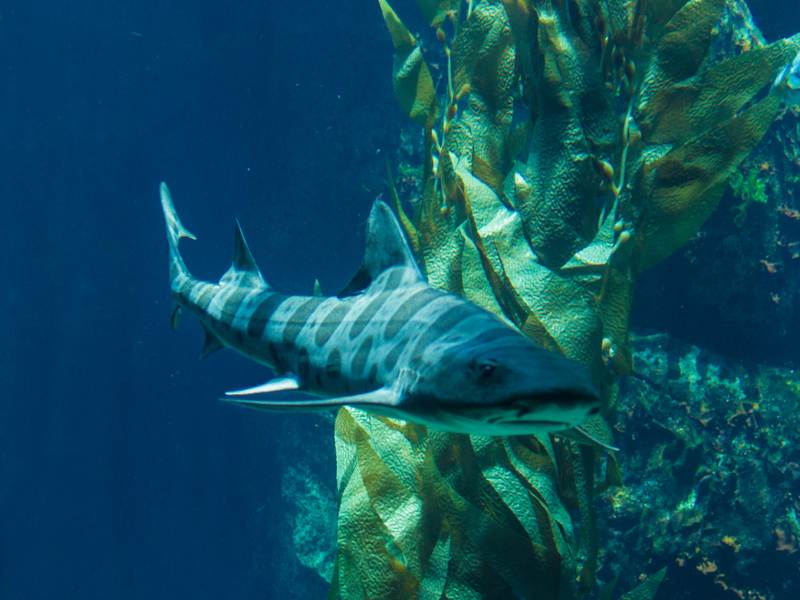
Venturing further south across the Mexico-United States border, the Gulf of California or Sea of Cortez stands out as an especially important habitat for leopard sharks. Warm, clear waters in this marine biodiversity hotspot provide ideal living conditions. Some key leopard shark locations within the Gulf of California include:
- San Felipe, Mexico: The coastal lagoons and bays near this small Gulf town host large aggregations of leopard sharks, making it a top spot for observing them.
- Islas Espíritu Santo: The waters surrounding these remote Gulf islands support a high abundance and diversity of sharks, with leopard sharks being very common.
- Bahía de La Paz: The shallow waters and sheltered rocky coastlines around La Paz Bay serve as productive nurseries and foraging grounds for leopard sharks.
- Los Cabos: Both sides of the southern Sea of Cortez near Cabo San Lucas and San Jose del Cabo are rich leopard shark habitats according to scientific surveys.
With warm water temperatures and an abundance of prey, the Gulf of California represents prime real estate for leopard sharks. Their populations here are thought to be some of the densest anywhere within their range. The protection afforded by Gulf of California national parks also helps safeguard leopard shark strongholds in this biodiversity hotspot.
Pacific Coast Range from Mazatlán to Guaymas
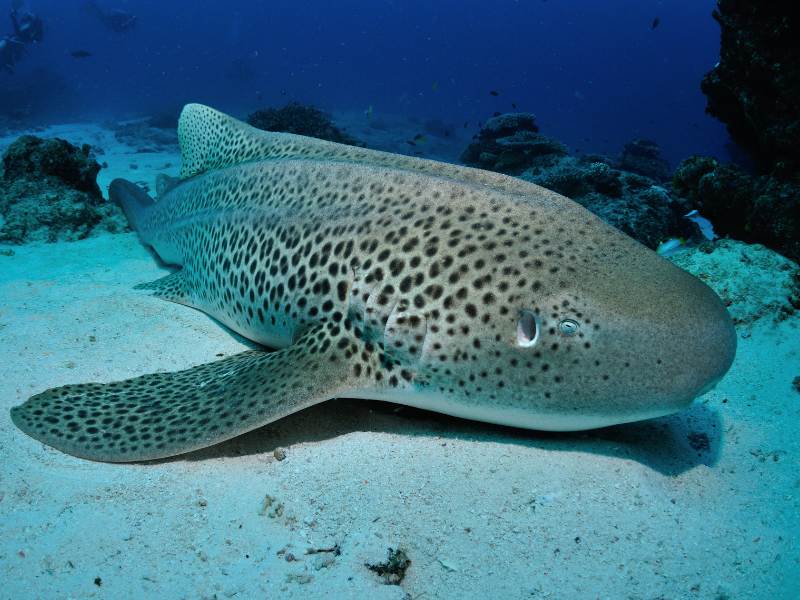
Continuing down the western coast of Mexico, the coastal waters from Mazatlán in the state of Sinaloa south to Guaymas in Sonora also fall within the established range of leopard sharks. Some of the bays, lagoons, and estuaries supporting leopard shark occurrences in this Pacific zone include:
- Mazatlán, Mexico: The port city’s sheltered waters historically hosted leopard sharks, though populations may be declining due to development.
- Bahía Kino: This large Sonoran bay’s shallow sand and mud flats are known leopard shark foraging areas according to long-term studies.
- Estero Soldado: This scenic wetland estuary opening onto the Gulf of California near Guaymas is an important confirmed shark nursery, including for leopard species.
With a climate moderated by the California Current and proximity to the rich Gulf waters, the Pacific coast of northwest Mexico from Mazatlán to Guaymas represents the southern extreme of leopard shark habitat before populations peter out. However, their exact geographic limits in this region require more scientific investigation.
Range Extensions: Oregon to Baja California?
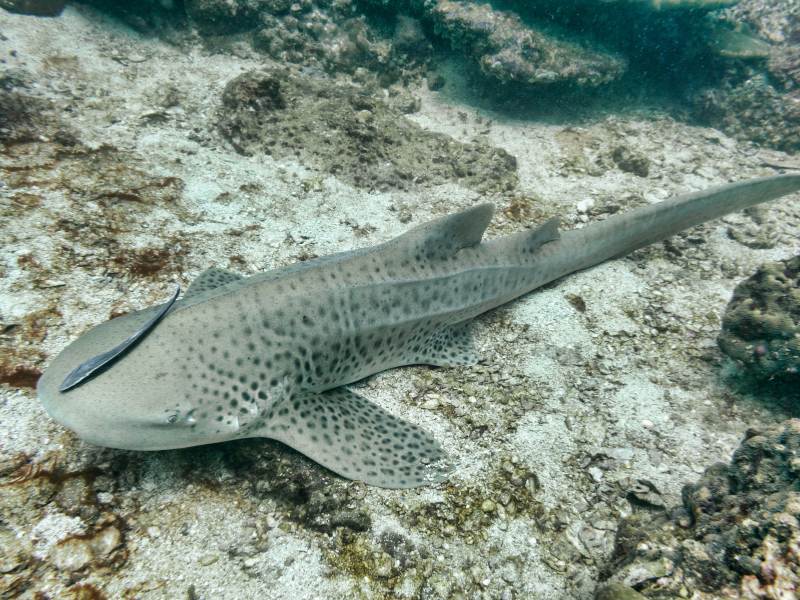
While the eastern Pacific coast from Oregon to mainland Mexico defines leopard sharks’ core contemporary range, some additional areas may extend their occupied habitat on the geographical fringes. For example:
- Unconfirmed anecdotal sightings suggest leopard sharks may seasonally range as far north as coastal Oregon bays like Coos Bay and Winchester.
- Simulated habitat model predictions hypothesize leopard shark presence extending farther down the full Baja California peninsula, yet their status that far south remains unverified.
- Historical records point to past leopard shark populations once inhabiting Morro Bay on California’s central coast, though they may be locally extinct from that location today.
As detection and sampling efforts increase with technological advances and growing research interest, our understanding of leopard sharks’ precise habitat boundaries will continue evolving. For now, their established Eastern Pacific range encompasses the waters discussed, with some potential for seasonal or past extensions beyond.
Leopard Shark Habitat Preferences
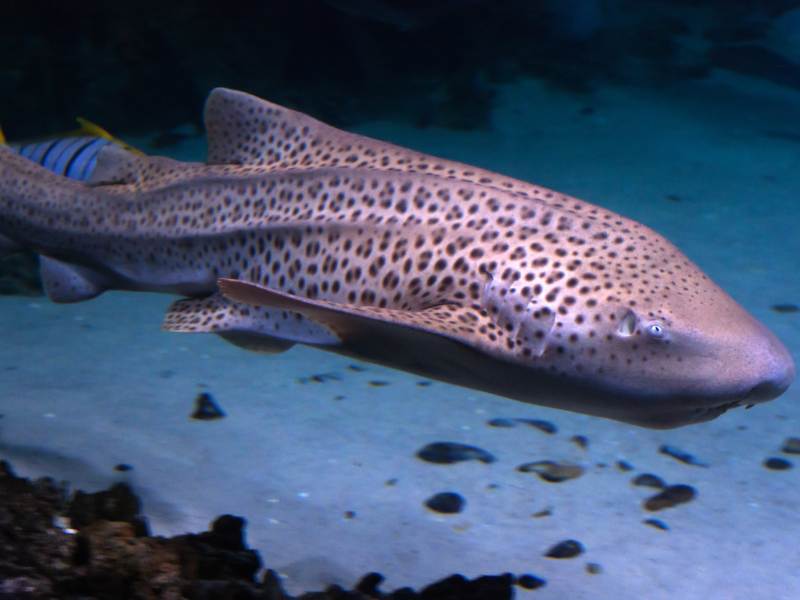
Within their expansive oceanic range, leopard sharks demonstrate clear preferences for certain habitats over others. Some key traits of their preferred living spaces include:
- Shallow Coastal Waters: Most commonly found from the intertidal zone down to around 100 feet deep, usually close to shore.
- Sheltered Bays & Estuaries: Protect habitats like eelgrass beds and mudflats that are ideal nurseries and foraging areas.
- Kelp Forests: Thriving kelp forests, such as off California’s northern Channel Islands, provide cover and ambush opportunities.
- Rocky Reefs: Seaweed-covered rocky reefs and stone jetties are another suitable camouflaged habitat.
- Sandy Flats: Expansive sandy flats and mud banks are important foraging locales, like those in Elkhorn Slough.
- Sufficient Prey Availability: Areas with abundant small fish, crustaceans, marine worms, and mollusks attract foraging leopard sharks.
By sticking close to productive coastal nursery sites protected by natural features like reefs and kelp, leopard sharks demonstrate specific habitat needs across their wide-ranging Eastern Pacific home.
Population Status and Conservation

As an abundant, small-bodied shark species, leopard sharks were once considered one of the least threatened chondrichthyan families. However, emerging research paints a more nuanced picture of their population health and long-term conservation needs:
- Historically subject to targeted fisheries on the US West Coast until protections in the 1990s.
- Considered a species of Least Concern by the IUCN Red List, but some local populations may face higher threats.
- Slow to mature (around 10 years) and low reproductive rates leave leopard sharks vulnerable to overfishing impacts.
- Coastal habitat degradation from pollution, development, and climate change impacts leopard shark nursery areas.
- Recent population declines are apparent in some regions like central California; populations in other areas like the Sea of Cortez remain healthy.
Overall while leopard sharks remain an abundant species throughout much of their range currently, continued research is needed. Careful fisheries management and protection of key nursery habitats will help safeguard thriving leopard shark populations well into the future within this ecologically and economically important region.
Also Read: Exploring the Predators of the Leopard Shark
Conclusion
From the kelp forests of La Jolla to the mangrove estuaries of the Gulf of California, leopard sharks demonstrate an impressive ability to thrive across diverse coastal marine environments throughout their expansive Eastern Pacific habitat range.
Although mainly distributed between northern Mexico and Oregon, populations may seasonally or historically have extended beyond these recognized limits. With a preference for shallow, sheltered nursery sites like eelgrass beds and estuaries protected by features like reefs and kelp, leopard sharks showcase clear habitat niches.
While generally abundant today, ongoing conservation efforts aim to sustain healthy leopard shark numbers in the face of pressures such as fisheries, pollution, and climate change impacts. Further research will continue improving our understanding of these iconic, spotted sharks and ensuring thriving leopard shark habitats persist far into the future within the dynamic Eastern Pacific Ocean.
